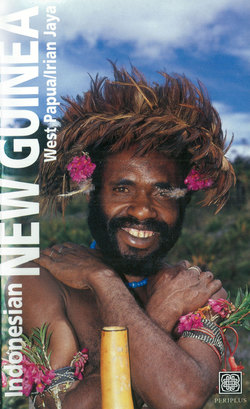Читать книгу Indonesian New Guinea Adventure Guide - David Pickell - Страница 20
На сайте Литреса книга снята с продажи.
ОглавлениеPART II
Biak and
the North
Jayapura, on the north coast of West Papua, and the large islands north of Cenderawasih Bay are the easiest parts of West Papua to visit, with well-developed communications and transportation networks, and plenty of hotels and restaurants to choose from.
Biak, formerly the first Indonesian stop for travelers flying Garuda Indonesia from the United States, was for most a groggy refueling break on the way to Bali or Java. But Biak, and neighboring Supiori, Numfor and Yapen Islands, are charming places to visit in their own right.
Biak is the best-known of the former Schouten Islands, and the most populated. The town has some lively markets, and an interesting harbor. Inland, one can visit the eerie caves where Japanese soldiers hid during World War II, and a small museum full of relics. Further out from the town, one encounters beautiful waterfalls and reefs.
The Padaido Islands, which dot the sea southeast of Biak, are ringed with coral and offer fine snorkeling in perhaps the richest and most unspoiled reefs in all of Indonesia.
For secluded beaches and near-shore snorkeling, head to nearby Numfor, a beautiful and lightly populated island. Thickly forested Yapen looms just across the water south of Biak. If the weather is good, one can see it clearly from the Biak harbor. The island's forests host the beautiful birds of paradise, and the shores have numerous sandy coves fine for swimming and snorkeling.
Jayapura, West Papua's capital and largest city, began its life as a Dutch port and administrative center. The city was placed here to mark the border with the German colony just a stone's throw away, and one can see into Papua New Guinea from the hills north of town. For many years, Hollandia was a small, backwater town, but it suddenly leaped onto the world stage during World War II as a staging point for General MacArthur's Pacific island hopping campaign.
Today, it is a thriving city of 170,000 with, in addition to West Papuans, a mixed population of Javanese, Makassarese and Bugis Muslims, as well as many Ambonese and Manadonese Christians. Jayapura is one of the few places in West Papua with paved roads and public transportation—including private taxis—and travel around the area is easy.
The Cenderawasih University Museum, in nearby Abepura, has a fine collection of artifacts from West Papua, and another nearby museum, the Negeri, displays objects of material culture from West Papua's various ethnic groups. A visit to these two museums is a good way to get some background before heading to the highlands or the south coast.
From Jayapura, a short hop to Yotefa Bay offers the spectacle of scattered World War II relics—half-sunken ships, beached tanks and landing craft. Or your boatman can take you to nearby fishing villages that consist of huts mounted on a forest of stilts. At high tide, the water reaches a meter-and-a-half beneath the village; at low tide, a wide expanse of mud flats is revealed, which, in at least one area, becomes a makeshift soccer field.
Nearby Lake Sentani, dotted with islands offers a stunning panorama of velvet-green hills easing their way into the lake. A meal of crispy lake fish and even water-skiing are possible here.
Drop by the World Wildlife Fund (WWF) Jayapura office in Angkasa for information and maps on visiting any of the more than 50 conservation areas in West Papua, and to the Provincial Department of Forestry (KSDA) in Kotaraja for the required permits to visit restricted areas.
